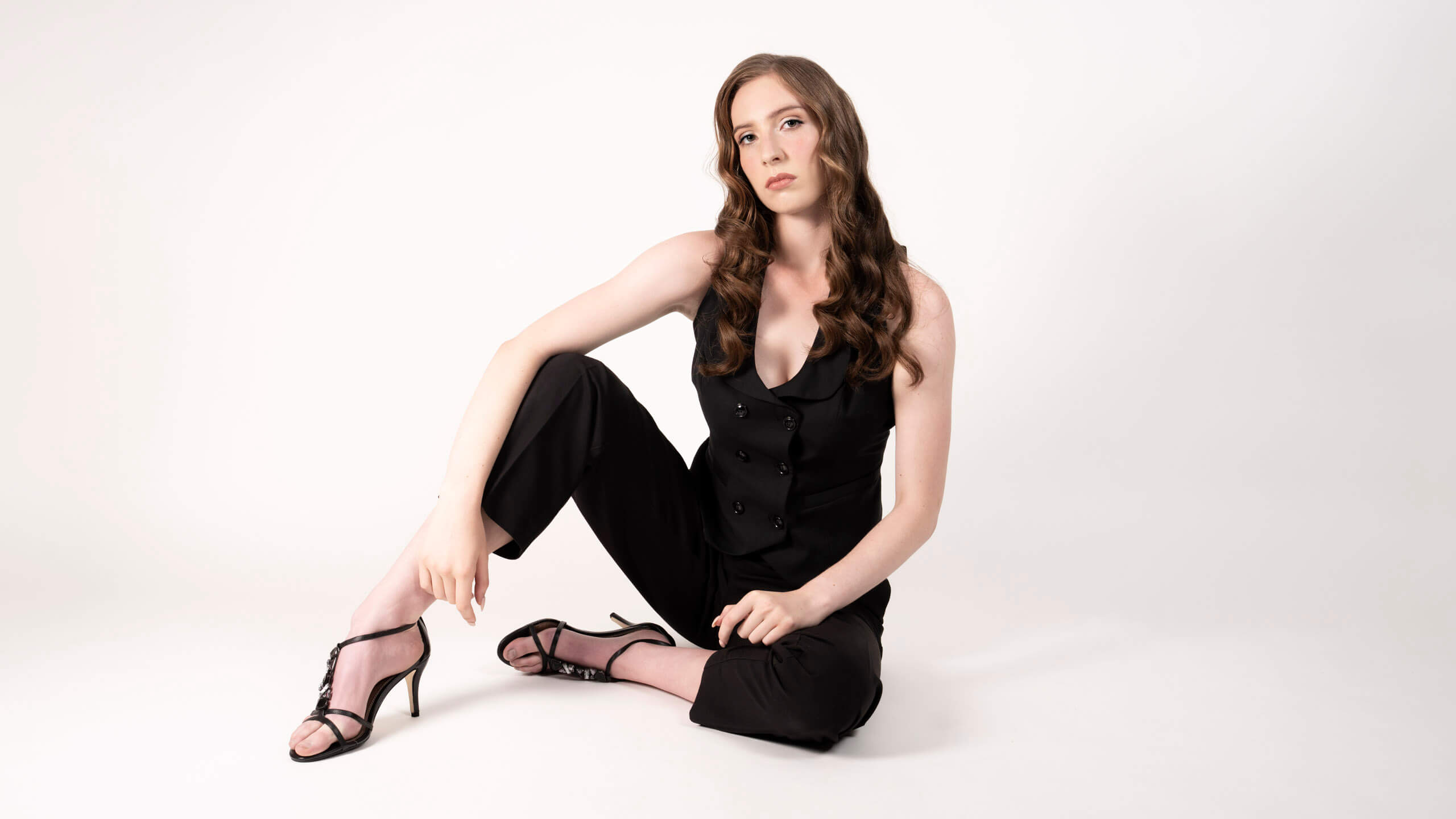
Contrast is one of the most powerful tools in photography. It’s what gives an image depth, dimension, and impact. When used well, contrast can make a portrait leap off the screen or print, drawing the viewer’s eye exactly where you want it to go. But when misused or overlooked, an image can feel flat, lifeless, or just plain uninteresting.
So, how do you master contrast in portrait photography? Let’s break it down.
What is contrast in photography?
At its core, contrast refers to the difference between the light and dark areas of an image. A high-contrast image has deep blacks and bright highlights, creating a bold, dramatic look. A low-contrast image, on the other hand, has a narrower range between light and dark, giving a softer, more muted feel.
Contrast isn’t just about brightness levels, though. It also exists in:
- Tonal contrast: The difference between highlights and shadows.
- Color contrast: How different colors interact (think of a red dress against a green background).
- Subject contrast: The difference between your subject and their surroundings, helping them stand out.
- Textural contrast: The interplay between smooth and rough surfaces, like soft skin against a gritty urban wall.
Understanding and controlling these different types of contrast allows you to create more compelling, striking portraits.
Lighting for contrast
One of the simplest ways to add contrast to a portrait is through lighting. Hard light—such as midday sun or a single, direct flash—creates strong shadows and bright highlights, leading to high contrast. This works brilliantly for moody, dramatic portraits where you want to emphasize depth and emotion.
On the other hand, soft light—such as an overcast sky or a large softbox—creates a lower contrast image with more gradual transitions between light and shadow. This is ideal for beauty or editorial portraits where you want smooth, even skin tones.
Experiment with different light sources and angles. Side lighting, for instance, adds a sculptural effect, while backlighting can create a beautiful separation between your subject and background.
Background and Subject Separation
If your subject blends into the background, the portrait will lack impact. One way to create contrast is by choosing backgrounds that make your subject stand out.
- If your subject has dark hair and clothing, place them against a lighter background.
- If they’re wearing bright colors, a neutral or dark background can make them pop.
- Using a shallow depth of field (a wide aperture like f/1.8 or f/2.8) can also help separate the subject from the background, increasing contrast in a way that draws attention to the subject’s face.
Contrast in post-processing
Even if you get everything right in-camera, a little post-processing magic can go a long way in refining contrast.
- Adjust the Tone Curve: This is my go-to tool in Lightroom and Photoshop. A classic S-curve adjustment boosts contrast by deepening the shadows and brightening the highlights.
- Dodge & Burn: Selectively lightening and darkening areas of an image adds depth and enhances the three-dimensionality of the portrait.
- Clarity & Texture: Boosting clarity can add midtone contrast, making details pop, while increasing texture can enhance rough surfaces like hair and fabric.
- Color Grading: Enhancing complementary colors (like warm skin tones against a cool blue background) naturally increases visual contrast.
Playing with color contrast
Don’t underestimate the power of color contrast in portraits. Opposing colors on the color wheel—such as blue and orange or red and green—can make an image more dynamic.
Try these techniques:
- A warm-toned subject (golden skin tones, red clothing) against a cool-toned background (blue or green hues).
- Using colored gels on lights to create color separation between highlights and shadows.
- Enhancing color contrast in post-processing by subtly shifting hue or saturation.
Contrast in black and white portraits
When color is removed, contrast becomes even more critical. High-contrast black and white portraits have a timeless, classic appeal. The key here is to pay attention to the distribution of highlights and shadows.
To make a black and white portrait pop:
- Increase the difference between dark and light areas.
- Adjust the red and yellow channels to control skin tone brightness.
- Use dodging and burning to sculpt the face and add depth.
Finding the right balance
While contrast is a powerful tool, too much of it can be overwhelming. Harsh shadows can obscure details, excessive color contrast can feel unnatural, and over-processing can make an image look artificial.
The key is balance. Experiment with different levels of contrast and ask yourself: Does it enhance the subject? Does it create the mood I’m aiming for? Does it draw the viewer’s eye to the right place?
Final thoughts
Mastering contrast in portrait photography takes practice, but once you get a feel for it, you’ll see a massive improvement in the depth, mood, and impact of your images. Whether through lighting, composition, color choices, or post-processing, using contrast effectively will help you create portraits that stand out and tell a story.
So, go out, experiment, and push your creative boundaries. Play with shadows and highlights, tweak your color combinations, and refine your editing techniques. The more you practice, the more instinctive your understanding of contrast will become—and the stronger your portraits will be for it!




